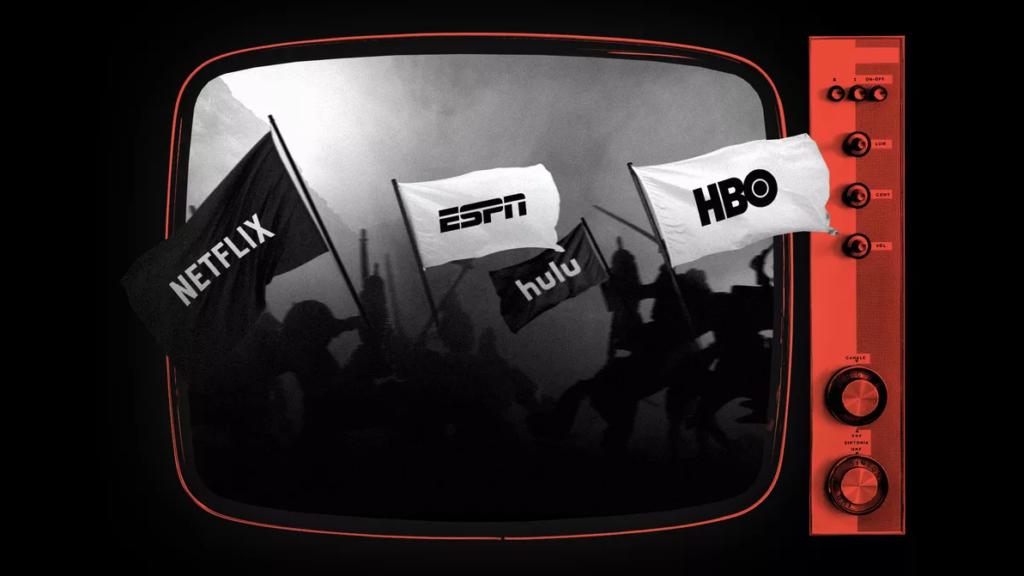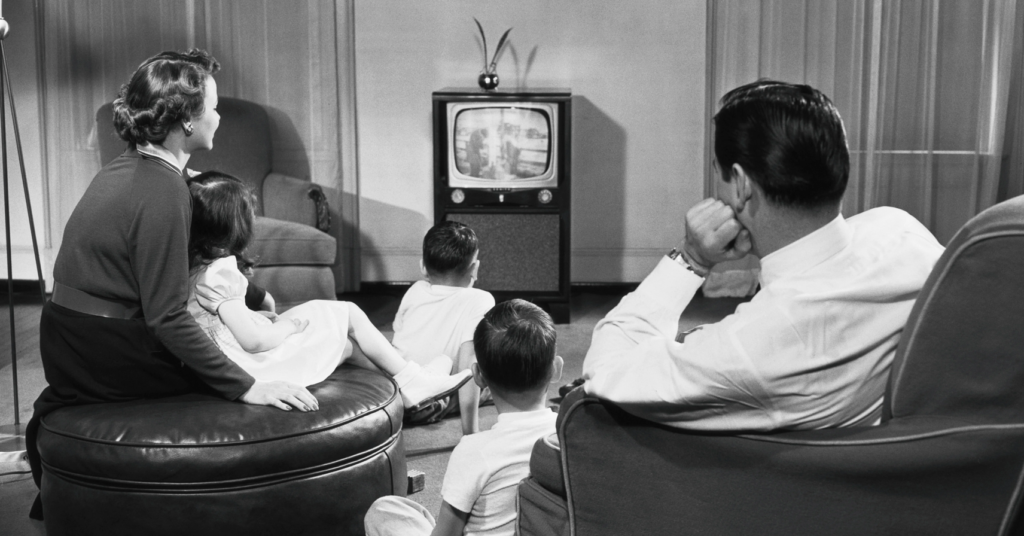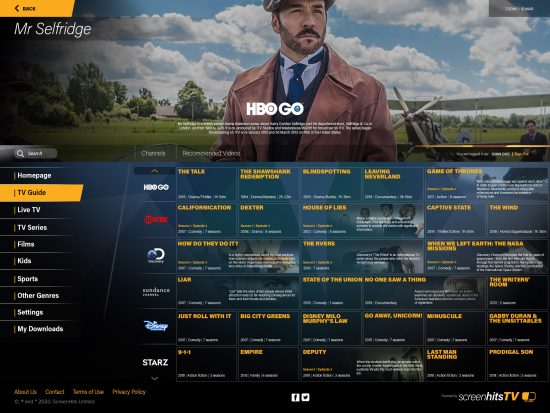The streaming wars are heating up and the television landscape is experiencing one of the most disruptive periods in its history. We watch with excitement the launch of new streaming platforms, such as Peacock, Disney+, Starz Play and HBO Max. These join an already buzzing marketplace filled with online content from Netflix, Amazon Prime, and Apple +, not to mention niche platforms like Acorn TV, Kidoodle or Shudder. So we find ourselves spoiled with choice and wondering if the abundance of content will exceed consumer demand or be just enough to get us to cut the cord.
Roku, Inc. recently announced findings from its annual Cord Cutting study, including new insights shared by US consumers about how the Covid-19 pandemic is influencing the shift to streaming. The study found that approximately 32% of US TV households do not have a traditional pay TV subscription (cable, satellite, telco), while another 25% of households identified as Cord Shavers cut back their service. When asked about intent to cut the cord fully in the next six months, 45% of Cord Shaver households said they were likely to do so.
The combination of economic pressures on households and the average higher cost for pay TV is driving consumers to cheaper alternatives. As a result, we’ve seen an acceleration in cord cutting across multiple pay TV operators in the US. Cord-cutting has also begun to hit Europe, with the EMEA region contributing losses of 660,000 pay TV subscribers to an overall global decline of over two million in Q3 2019, according to the latest Multiscreen Index for Informitv.
So what does all this mean? Viewers are starting to consume their content off cable and online and the media industry has responded by creating their own streaming platforms and going direct to consumers, thus resulting in the streaming wars.
Content discovery, endless scrolling, switching between apps, subscription fatigue, and customer retention are just some of the challenges that are presented to everyone while navigating the streaming jungle.

Let me put this in layman terms. Most of us still pay for our traditional cable service, whether that is £40 a month or £150. Some of us pay for it just to watch sports, others just for kids content, and for some, access to those fresh out of the cinema films. However, despite the fact that we pay a large amount for our cable service each month, which gives us access to thousands of great films and TV shows, we now find ourselves subscribing to multiple streaming services. Not to mention renting something on one platform only to find it is available for free on one we already subscribe to. Clearly this is not the money saving and consumer friendly environment that was the promise of OTT. On the contrary, it can be a user nightmare and a complete waste of money.
I recently took a deep dive look into some data from our early adopters and what I found was astonishing, but not at all surprising.
Our pre-launch research showed that the majority of our subscribers prior to ScreenHits TV had 2 or 3 apps, but used one 95% of the time. Think about that for a moment: most users pay for two other apps while only casually accessing them for 5% of their viewing.
Why this preferential treatment? The research showed that while the consumer was happy to add multiple services to get access to a particular show or film, they found it too frustrating to switch between apps on a regular basis to see what’s trending, what to watch, or even worse, to become confused on which app they were watching what on.
This data shows that new streaming services launching in the market will find themselves in a real life Game of Thrones.
The new services aren’t a threat to the big three: Netflix, Amazon Prime Video and Hulu. It’s not about consumers dropping what they already have. It’s about adding – or not – to these already established favourites.
The new services aren’t a threat to the big three: Netflix, Amazon Prime Video and Hulu. It’s not about consumers dropping what they already have. It’s about adding – or not – to these already established favourites. Services launching before the end of 2021 will likely face more of an uphill battle when it comes to attracting new subscribers as they ramp up marketing. Considering consumers are reluctant to add more than two or three new services, it’s not surprising 74% of our respondents felt there would soon be too many streaming options to choose from.
So the big question is: what is the media industry doing to resolve all of these key concerns for the customer? What will the future of TV consumption look like? Will it be cheaper? More expensive? Is cable going away? Will the rise of the SVODs take over? And who will emerge as the new face of television?

No one can tell the future, but data and facts can help us predict it. Let’s look at some key factors:
First cord cutting is a real thing and the majority of consumers who consume TV content will do it via the internet in the near future for a number of reasons: cost saving; content discovery; binge watching; better user experience; parental controls; sporting rights.
Now, while most of these are self-explanatory, let’s delve into the cost factor and sporting rights a bit more, as these will be big game changers.
Let’s discuss cost savings first. Through our pre-launch research, we found that the cost was the number one complaint with 93% stating that traditional TV was going to become too expensive. 72% of consumers aged 25-34 say they get better value from streaming services than pay-TV. 61% say they would be willing to “cord cut” and build their own bundle. For the streaming platforms to truly take over the future of television and encourage more cord-cutting, they will need to bundle apps and create packages to provide the customer with a no-brainer decision. If the consumer can clearly see a monetary benefit, they will jump ship, no questions asked.
Now on to sports. The companies that currently own sporting rights are looking at ways they can join the streaming wars and reach their consumers directly at home, especially if their fans are unable to attend live events due to Covid regulations. We can already see the sports industry testing out internet consumption with the partnering of ATP and the English Premier League with Amazon Prime.
This creates huge opportunities for the sporting industry to take back control of their TV rights and sell direct to consumers, whether that is an access pass per game or match, or a monthly fee for unlimited access. We can see an example of this with the introduction of the annual pass BT launched, which offers pay-as-you-go access to its sports content through Now TV. If the clubs create their own streaming platforms, not only will they own the consumer relationship, they will undoubtedly generate greater profit for themselves than that of their existing third party licensing deals. Once this happens, you will see even more people cut the cord at an accelerated rate and switch to internet viewing.
The proof is in the pudding and Amazon recently stated its Premier League streams drove record-breaking signups to its Prime subscription service in the UK. Just goes to show, content will always be king, and customers will follow the content wherever it may be and now that content owners have a direct link to consumers, the game has changed forever.
Next, consumers won’t continue to switch between apps. While owning the relationship with the subscriber is paramount for the majority of the key streaming players, it is inevitable that they will have to work with a non competitive aggregator that can help navigate and ease the viewing experience for the consumer. If not, consumers will become overwhelmed and not get the most use out of all their subscriptions, thus cancelling them. This can all be avoided by utilising an easy to use aggregator, helping to promote content discovery across all the platforms without the need to keep switching through multiple apps. If done correctly, a consumer will get equal discovery access across all their streaming platforms, thus eliminating the 95% to 5% access time ratio discussed earlier. A Hub Entertainment Research survey of US consumers last July found consumers hungry for consolidation: looking for fewer platforms – even a single platform – that will deliver their full array of content in one place. This creates a powerful opportunity for content owners to take advantage of this ‘cord confusion’ by partnering with a single platform that builds loyalty among existing subscribers, brings new consumers and even wins back lapsed customers.

Next, there is a cap on how many streaming services that consumers can consume. There are more than 300 streaming apps available on the market and more launching each month. Consumers don’t have the time or the will to search through huge content libraries across multiple apps. It is not going to happen. When viewers are faced with too many choices of what to watch, some end up tuning out, while others shut down entirely.
That’s the main finding from Nielsen’s Total Audience Report from the first quarter of 2019. Viewers spend just over 7 minutes browsing a streaming service for something to watch. Younger adults – those between 18 and 49 – spend 8 to 10 minutes looking for something before calling it quits, whereas older adults give it just 5 minutes. Just over 20 percent who go in unsure of what they want to watch wind up giving up and tuning out. There is a simple fix to this problem. Super Aggregators with a strong UX on content discovery across all the different apps can provide the desired consumer experience.
Now, change is never easy. No one likes the unknown or to disrupt things that have been working; however, change is inevitable and industries are just like a river, they are constantly changing and adapting to their environments. Adjusting to big changes can be hard and for some impossible. The Industrial Revolution that took place between 1820 and 1840 saw a shift in hand production methods to machines. Those that embraced that change generated an abundance of wealth, those who did not, well we all know what happened. Just goes to show, those that adjust to change will be at the forefront of success and those who do not embrace change, get left behind. We saw it with Vanilla Ice, Blockbuster and with Tower Records in the 90s and early 2000s.
One thing I have learned in my career is that people go where the money is and the money lies with the consumer.
Next, the consumer always decides. One thing I have learned in my career is that people go where the money is and the money lies with the consumer. Once the consumer demands where they want to consume content, the streaming platforms will follow, even if that means going on a super aggregator. It is all well and great to keep one’s content close at hand and to create the allure of exclusivity, but the goal is to ensure that content is finding its way to the customer. Discovery will be the key ingredient to the future of TV. Awareness is a first-step indicator to whether or not a consumer will subscribe and because most consumers don’t intend to add more than two-three new services, it becomes a critical metric for the industry.
As new services launch, consumer sentiment will evolve and it will be critical to understand how these changes impact television’s future. I have witnessed the industry’s progress from clicking through channels on a remote control to spending Friday nights in a cue at Blockbuster paying £80 in late fees all while praying that someone returns the new release video that I drove all the way to Blockbuster to rent in the first place to switching between streaming services to try and find something to watch. As content discovery becomes more of a challenge in this environment, we need to better understand the viewing patterns and how we can help consumers discover content and streaming services in a cost effective way that delights them.
So, the battle begins. While the streaming wars are in full bloom, the battle over the super aggregators have just begun and ScreenHits TV is at the forefront of it. In 2012, I created a content aggregation platform for the B2B buying and selling of TV and film content online.
This platform did one unique thing. It combined a number of different content rights owners from production companies, studios, distribution companies, and foreign sales offices into one platform providing industry buyers of content with a simple to use interface to search across all of them in one place. The technological success of this product opened the doors for us and we were able to provide this content monetisation tool to companies like Turner Broadcasting (now WarnerMedia) and developed their in-house content monetisation marketplace for a number of their premium channels.
The ScreenHits tech platform worked wonders and when we saw an opportunity to address the growing frustrations in the market and eliminate the need to toggle between apps, account setup and management across multiple streaming services and the inability to easily find content, we decided to launch a consumer version of our tech, ScreenHits TV.
Media companies know there’s power in bringing their own content directly to the consumer via their own distribution platforms. And, as cord-cutting occurs at ever-increasing rates, this is the time to bring change. Having this key research has helped ScreenHits TV to make informed decisions and work together with the world’s premium streaming platforms to navigate these monumental shifts in the marketplace.
Content has been equally matched with user experience in the battle for consumer satisfaction and the winners of this next phase will be those that can find an easy and cost-effective way for consumers to find, stream and binge their favorite shows, as well as discover new ones all in one place. Together we are building the TV for the next generation. But don’t take my word for it. Try it out yourself.


